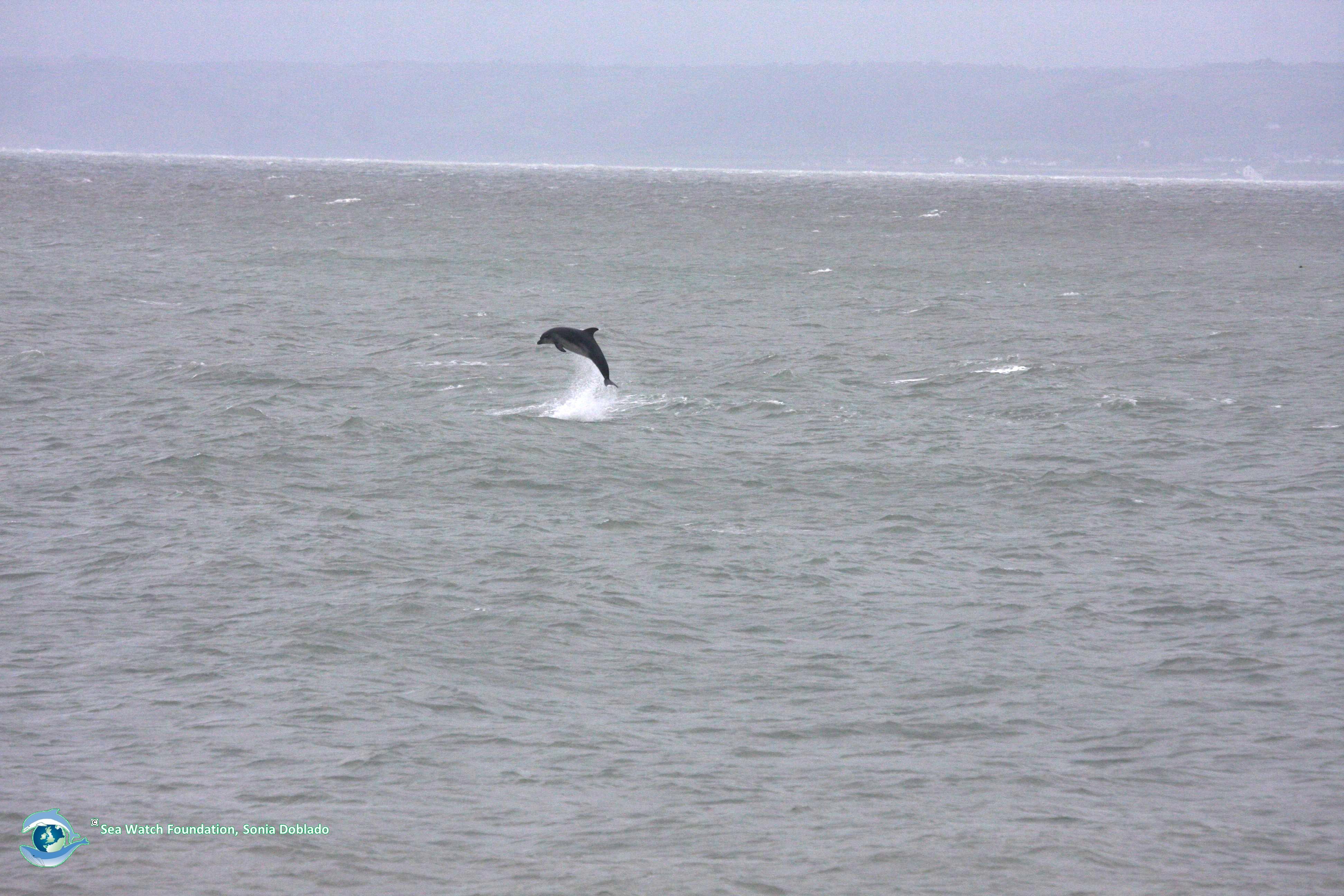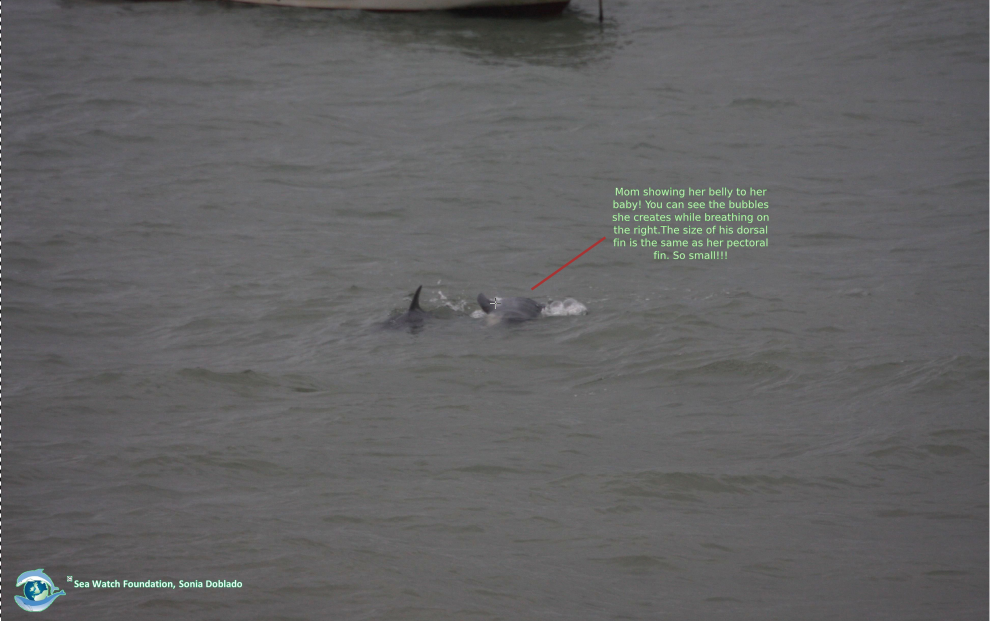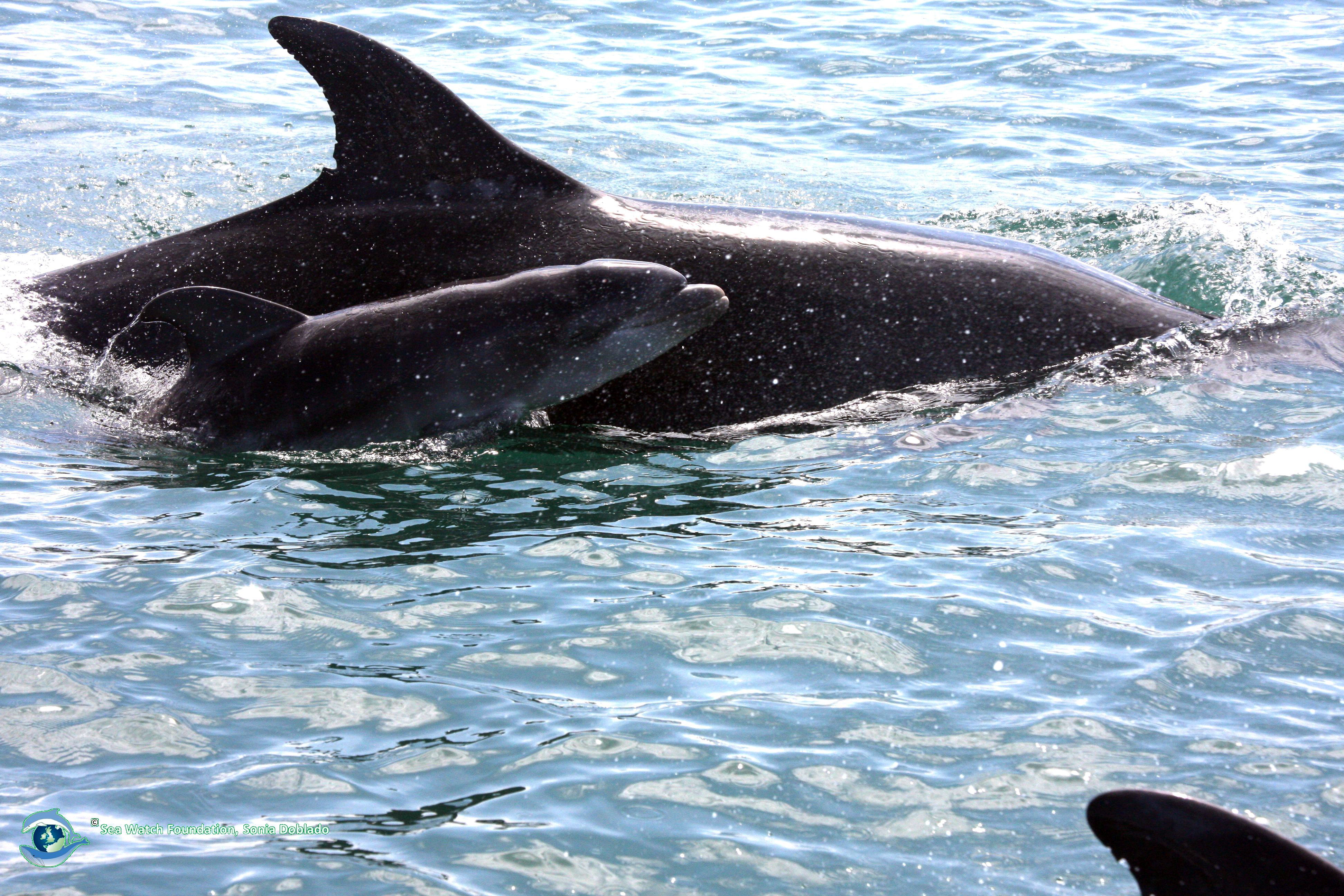Sea Watch Foundation welcomes volunteers from all over the world to assist on their Cardigan Bay Monitoring Project throughout the summer months. The primary focus is to observe and document the bottlenose dolphins that are famed for using the bay, but other marine mammals such as harbour porpoise and grey seals are recorded too. This year’s volunteer Research Assistant, Sonia Doblado from Spain, was in for a big treat yesterday morning when she headed out for a routine survey.
The UK-wide research charity asks wildlife enthusiasts to sit by the coast dedicatedly searching the seas for any sign of a fin and the team in New Quay do the same from 7am right through to 9pm when the light and weather conditions allow. The early shift belonged to Sonia on Thursday 4th August and by the end of it, she was very glad to have dragged herself out of bed!
It’s not uncommon for the bay’s bottlenose dolphins to appear very close to the harbour wall in New Quay, but on this occasion six appeared seemingly out of nowhere and to Sonia’s astonishment one was a tiny new-born dolphin calf. Bottlenose dolphins do use the sheltered waters of Cardigan Bay to have their young, so whilst this is not so remarkable itself, what thrilled Sonia even more was witnessing the youngster feeding from its mother! Dolphins, along with whales and porpoises (collectively termed cetaceans) are mammals which means they produce milk which they feed to their young. To witness this taking place was a spectacle indeed!
“I didn’t know where to look! There was so much happening all at the same time and I could not believe that I had the opportunity to witness a new-born calf being fed” Says Sonia, Research Assistant for the charity this summer.
Aside from the opportunity to see this special behaviour, there were also four other dolphins in the mix, including ‘Berry’ and her calf ’Pip’. Sea Watch are able to identify individual dolphins by photographing their dorsal fins (on the animals’ backs). Over time, these build up nicks and notches which are unique to each animal, similar to a finger print in humans. Once an animal is photographed and identified its life history can be determined; which habitats does it prefer, which months is it seen, where does it travel to, how old is it, does it have any young? Pip was named last year by the public who took part in a naming competition both online and from the pier in New Quay. With three youngsters having been seen in the past couple of weeks, the foundation will be again offering the opportunity to name one of these youngsters. Follow the Sea Watch Foundation social media to keep abreast with news of the competition and updates from Cardigan Bay and beyond.
Using the photo-identification technique, the charity are able to offer an ‘Adopt A Dolphin’ scheme which offers adoptees the chance to follow the fortunes of real wild bottlenose dolphins in Cardigan Bay. The charity is reliant on the scheme for funding so it directly helps the dolphins too.
One of the new calves was spotted on a Sea Watch Foundation all day survey last Saturday (above). It’s mother was identified as ‘Trouble’ who has been followed by the team of researchers since 1989. Another calf was photographed by the staff on board Dolphin Spotting Boat Trips on Wednesday (pictured below), the researchers will work with the boat company to identify this individual’s mother to see just how many babies there are in the bay!
Anyone interested in taking part in dolphin research for themselves should get in touch with the national charity as there are lots of opportunities to help out. Wherever you’re based there are opportunities to get out there and record cetacean activities so please do get in touch!
Follow Sea Watch Foundation on social media:
![]() seawatchfoundation
seawatchfoundation ![]() @SeaWatchersUK
@SeaWatchersUK ![]() seawatchfoundation
seawatchfoundation
Find out about volunteering opportunities:
www.seawatchfoundation.org.uk/become-a-sea-watch-observer & www.seawatchfoundation.org.uk/home-based-volunteering
Find out about Adopt A Dolphin: www.adoptadolphin.org.uk





























